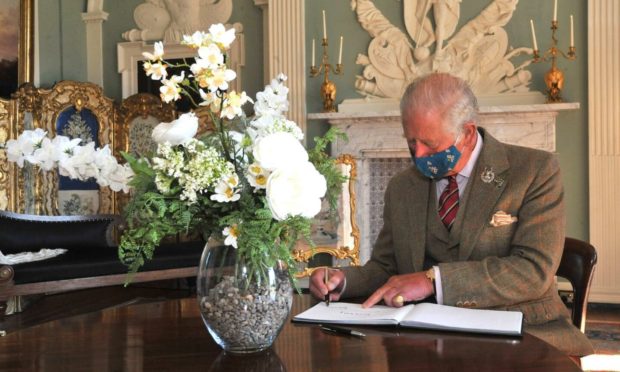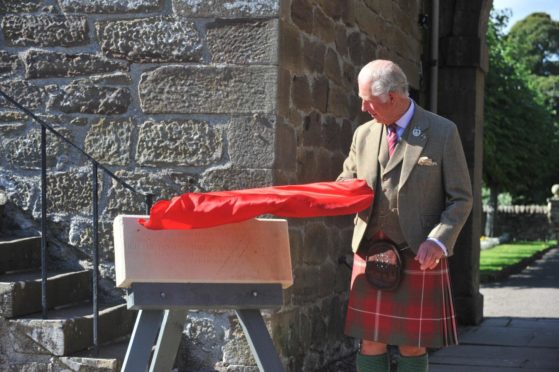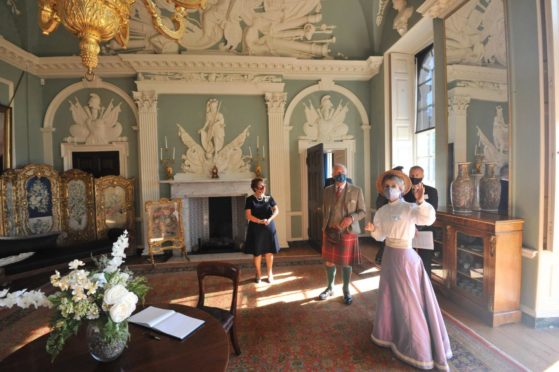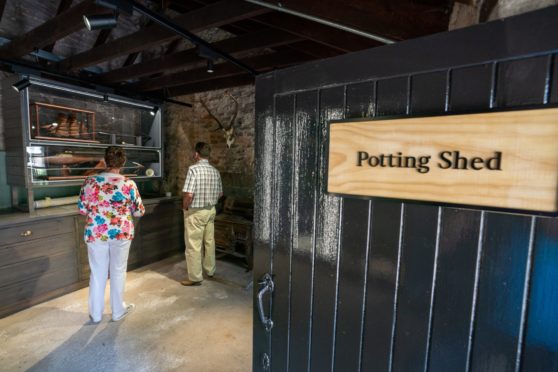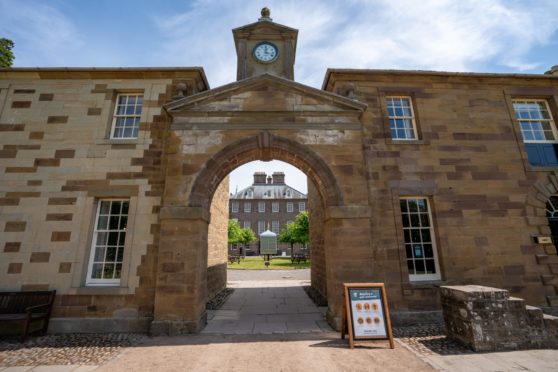The historic House of Dun in Montrose welcomed a royal visitor to herald the official opening of the Angus Folk Museum.
His Royal Highness Prince Charles was given a tour of the new heritage park, on the grounds of the 270-year-old mansion.
The Duke of Rothesay was welcomed by more than 100 guests at the museum, which tells the story of hundreds of years of rural life in Angus.
Angus Folk Museum sits in the House of Dun estate’s courtyard, now named the Dr Sheila Bain Courtyard, which was transformed in the £714,000 project.
Prince Charles is the patron of conservation charity the National Trust for Scotland, which owns the property.
Life of an ‘Angus wifie’ among museum’s stories
Around 400 items are on display, telling the story of 200 years of rural life in Angus.
The collection encompasses a wide range of objects which represent features of former country lives.
These include the work of an ‘Angus wifie’, beekeeping, schools, spinning and weaving, kitchens, eating and drinking, county fairs, beggars and the poor, the supernatural, nurseries and toys.
They were chosen from a vast collection amassed in the early 20th Century by Lady Maitland of Burnside, who died in 1982.
Prince Charles ‘fascinated’ by museum
The National Trust for Scotland’s chief executive, Phil Long said the museum gives a view of Angus life hundreds of years ago.
He said: “His Royal Highness honoured us twice today by formally opening these wonderful new installations at the House of Dun, shortly after confirming that he would remain as patron of the National Trust for Scotland.
“Knowing our patron’s deep connections with the countryside, I could see he was fascinated with the various display items that have been carefully selected from Angus Collection.
“It is a tribute to the foresight of Lady Jean Maitland that she collected things that were becoming obsolete and being disregarded, but which now give us an insight into a lost world of Scottish and Angus rural life which shaped our ancestors’ lives and the society we live in today.”
Estate can now show off natural heritage
Under-utilised space in the house’s courtyard has been transformed to host important items from the collection.
Multi-sensory installations tell the wider stories of the Dun estate, the county of Angus and its impact on Scotland’s history.
The attraction, which reopened to the public earlier this summer, also explores the lives of rural communities and celebrate the estate’s important natural heritage.
Mr Long, who left his previous post as director of V&A Dundee last summer, said the team behind the project deserve a huge amount of credit.
He said: “That the objects from the collection are so well and informatively displayed is testament to the care and professionalism of our collections staff and the architects and contractors who made the buildings ready to house them, as well as the project management skills of Iain Hawkins and his team.
“We were delighted and honoured that The Duke was able to meet and thank many of them in person today.”
House of Dun was designed by renowned Scottish architect William Adam for wealthy lawyer David Erskine (the 13th Laird of Dun).
Completed in 1743, it was bequeathed to the National Trust for Scotland in 1980.
